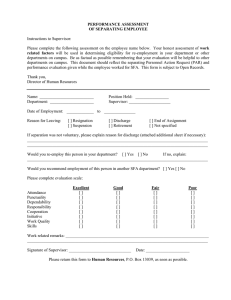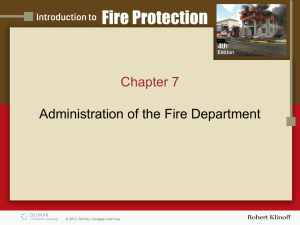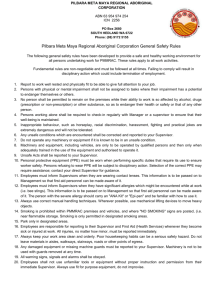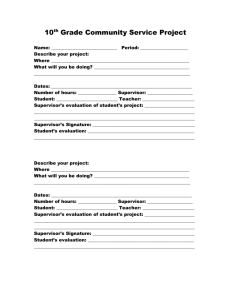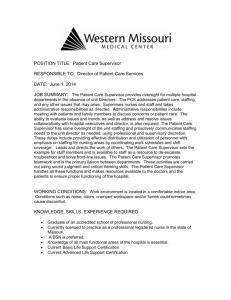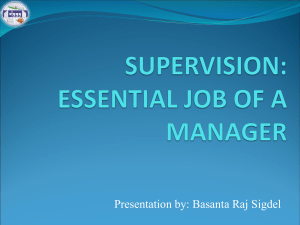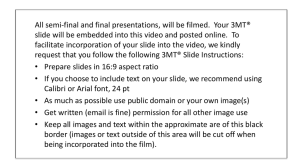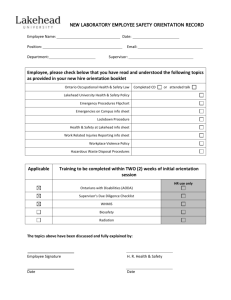New Employee Orientation Checklist: Safety & Responsibilities
advertisement
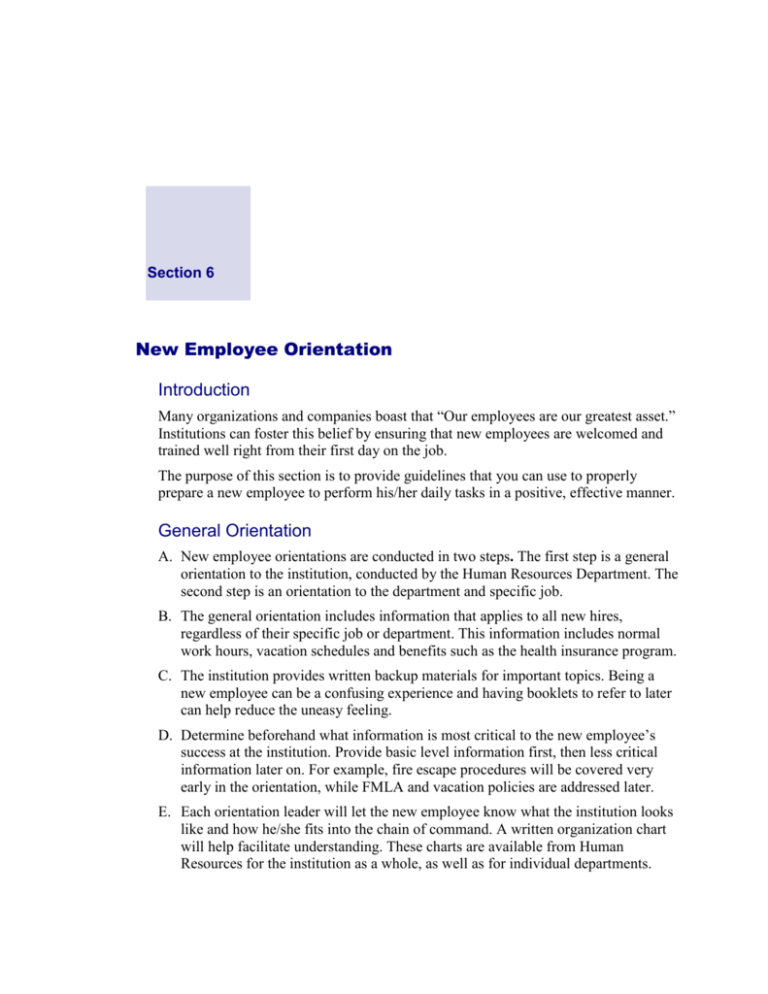
Section 6 New Employee Orientation Introduction Many organizations and companies boast that “Our employees are our greatest asset.” Institutions can foster this belief by ensuring that new employees are welcomed and trained well right from their first day on the job. The purpose of this section is to provide guidelines that you can use to properly prepare a new employee to perform his/her daily tasks in a positive, effective manner. General Orientation A. New employee orientations are conducted in two steps. The first step is a general orientation to the institution, conducted by the Human Resources Department. The second step is an orientation to the department and specific job. B. The general orientation includes information that applies to all new hires, regardless of their specific job or department. This information includes normal work hours, vacation schedules and benefits such as the health insurance program. C. The institution provides written backup materials for important topics. Being a new employee can be a confusing experience and having booklets to refer to later can help reduce the uneasy feeling. D. Determine beforehand what information is most critical to the new employee’s success at the institution. Provide basic level information first, then less critical information later on. For example, fire escape procedures will be covered very early in the orientation, while FMLA and vacation policies are addressed later. E. Each orientation leader will let the new employee know what the institution looks like and how he/she fits into the chain of command. A written organization chart will help facilitate understanding. These charts are available from Human Resources for the institution as a whole, as well as for individual departments. F. Encourage friendships between new employees, even if they will be working in different departments. This will help provide a friendly familiar face when they first venture out of their departments. G. The orientation will include a review of the institution’s mission statement and goals for the year. This helps the new employees understand how they can contribute to the success of the institution. H. If time permits, several members of Administration will be on hand to help welcome the new employees. This demonstrates that Administration considers the new people valuable enough to spend a few minutes getting to know them. I. Remind them that acclimating to a new institution can be difficult at times and that everyone working at the institution now was once a new employee too. Let them know that you will be following up with them in a few weeks to see how they are getting along and that they can come to you any time with questions about their new job. J. Encourage them to ask questions, not only during the initial orientation session, but also during any meetings or chance encounters you may have with them. Departmental Orientation A. First, introduce yourself and put the new employee at ease. Explain how the department’s tasks are organized and how he/she will fit into the work schedule. B. At some point early in the orientation, introduce the new person to his/her coworkers. If appropriate, celebrate the arrival with a group lunch or snack time. New workers tend to bond faster with their co-workers if they can see them not just as fellow employees but also as human beings. A meal is a good way to start developing good working relationships. C. Ask if the new employee has any questions regarding the general orientation. Was anything unclear? If you are confident of the correct answers to the new employee’s question(s), feel free to respond. Otherwise, refer or accompany the new employee to Human Resources, where the question(s) can be answered. D. A written description of the new employee’s job should be provided and discuss the specific tasks involved in performing the job. Encourage the person to ask questions. At the end of the discussion, ensure that he/she understands the responsibilities of the job. Provide and discuss any Job Safety Analyses that have been performed for any jobs he/she will be performing. E. Show the person what equipment or tools are used in performing the job and his/her responsibilities for care of that equipment. F. Provide the individual with training in the institution’s programs for Manual Material Handling, Fall Prevention, Vehicle Safety, Office Ergonomics and Sexual Harassment. G. Review any personal protective equipment (PPE) requirements and make sure that the person understands his/her responsibilities in that regard. H. Provide or arrange for training in other OSHA-required subjects, such as HazComm, Lockout/Tagout (if applicable), and Machine Guarding. Make sure that the training is documented. Make sure that the training is documented. I. To help the new person get acclimated faster, assign an experienced employee to act as a “buddy” for a week or two. The buddy can answer questions and demonstrate how to perform the job safely and can also report back to you any concerns that he/she cannot answer. J. Meet with the new person periodically to help increase his/her comfort level with the organization. For the first week, the meetings might be at the end of each day. After that, decrease them to one or two days a week, then as necessary. Appendix 6-A Sample New Employee Orientation Checklist Name _____________________________ Employment Date _____________ Job Title ___________________________________________________________________ The supervisor should discuss the following on the first day of employment or transfer to a new job. Check each item as completed. ٱ Management's commitment to safety ٱ The employee's safety responsibilities ٱ Disciplinary action for failure to follow safety procedures ٱ Report of any unsafe conditions or unsafe action ٱ Accident reporting procedures ٱ Safety rules, policies and procedures ٱ Equipment training and/or Special job training (as needed) ٱ Use of personal protective equipment ٱ Chemical hazard communication training ٱ Fire Prevention ٱ Emergency Procedures ٱ Other: ________________________________________________________________ Supervisor Providing General Training: Name ___________________________________ Date of training _______________ Supervisor Providing Job-Specific Training: Name ___________________________________ Date of training _______________ NOTE: To be completed with orientation and filed according to procedures.
